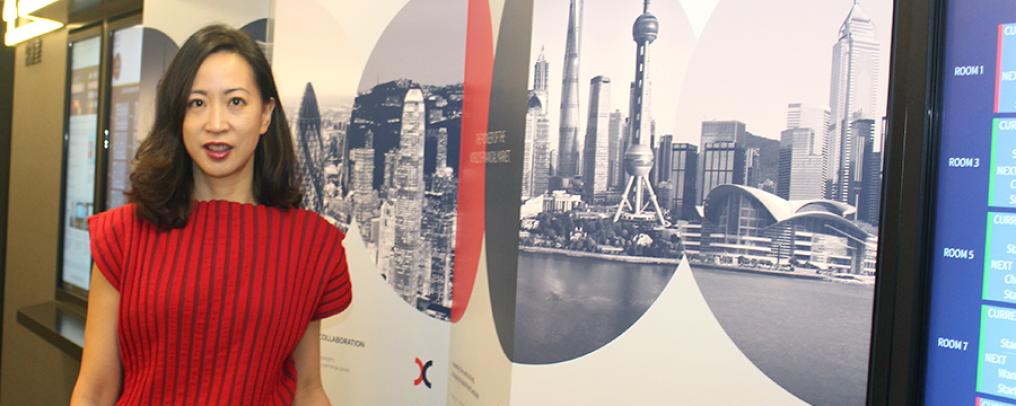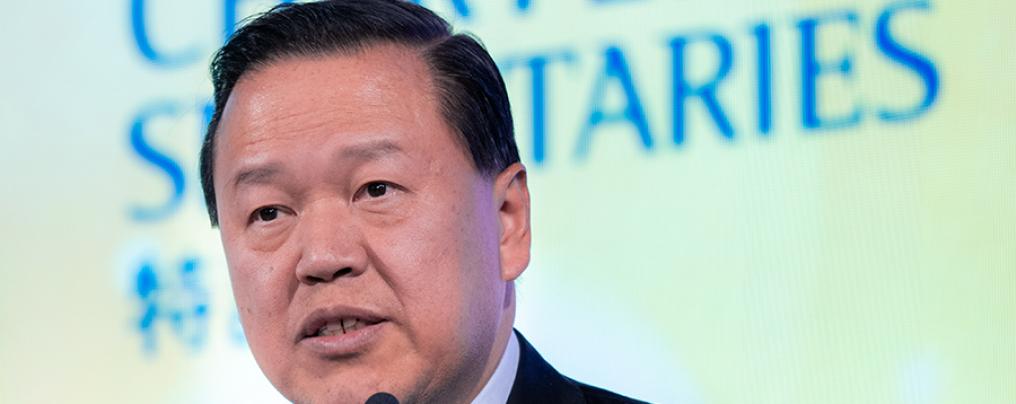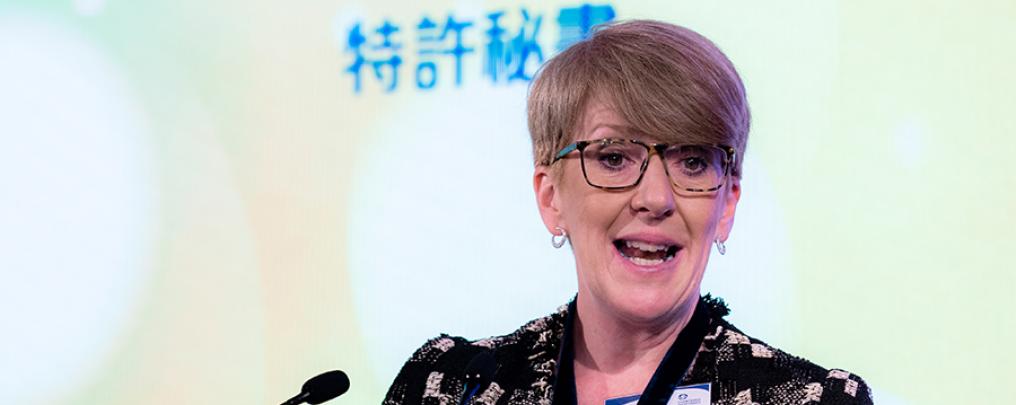CSj gets advice on how governance professionals can help companies stay on the right side of Hong Kong’s legal and regulatory regime relevant to conflicts of interest.
In November 2019, Hong Kong was treated to an object lesson in how not to go about managing conflicts of interest. Court proceedings brought by the Securities and Futures Commission (SFC) against the former executive chair and three former executive directors of Minth Group Ltd (Minth) highlighted multiple breaches of Hong Kong’s regulatory regime relevant to conflicts of interest.
In 2008, Minth’s subsidiary, Decade (HK) Ltd (Decade), made an acquisition of two companies in a manner that seemed above board. The court proceedings revealed, however, that the sellers were relatives of the executive chair and he was also the true beneficial owner of the issued shares in the two acquired companies. These conflicts of interest and the full terms of the acquisition were not disclosed to the board and shareholders of Minth. A total of HK$99 million was paid by Decade for the acquisitions, and not RMB25.9 million as claimed in the Interim Report 2008 issued on 22 September 2008, and the bulk of the total consideration paid by Decade ended up in bank accounts controlled by the chair.
The chair had clearly acted in breach of his fiduciary duty owed to Decade. The three former executive directors of the company had failed to make further enquiries that should have revealed the conflict of interest of the chair and may have prevented Minth from making numerous misrepresentations to relevant parties. The court ordered the chair to pay a sum of RMB20.3 million in compensation to Decade. The three executive directors, together with the chair, were disqualified from being directors or being involved in the management of any corporation in Hong Kong for a period of between three and six years.
The hydra-headed beast
While breaches of Hong Kong’s related-party transactions regime of the type described above in the Minth case can be fiendishly complex for governance professionals to manage, they represent one of the clearer types of conflicts of interest cases. Related party transactions are also relatively common in Hong Kong. Where a controlling shareholder of a listed company, for example, has a number of other businesses, some of which deal with the listed company, the dealings have to be transparent and approved by the independent directors. Governance professionals have to ensure that all such transactions are brought before the board for approval.
Hong Kong’s regulatory regime has a lot to say about related-party transactions but the risks associated with conflicts of interest go much wider than that. ‘Because conflicts of interest are so diverse,’ says David Simmonds FCIS FCS, Institute Vice-President and Group General Counsel, Chief Administrative Officer and Company Secretary of the CLP Group, ‘they require a conscious alertness throughout the organisation right through to the board – that is the only way that you can have any chance of uncovering them.’
The further you look into this area, the more complex it becomes. Ultimately, getting to grips with conflicts of interest best practice raises large questions about in whose interests companies should be run. The responsibility of the board is to always act in the interests of the company, but what are directors to do when the interests of different groups of stakeholders clash? This can be further complicated when directors see themselves as representatives of a particular ‘interest’ on the board. For example, directors may feel personal ties of loyalty to an individual, such as the chief executive, or to the majority shareholder who invited them on to the board. That could distort their decision-making.
Other common scenarios where conflicts can arise include the situation where a director has multiple directorships across competing companies, or where an individual holds multiple roles within an organisation. This type of role conflict is relatively common in Hong Kong and is becoming a much better recognised governance issue.
Role conflicts
The most common reason for non-compliance with Hong Kong’s Corporate Governance Code relates to the provision that one person should not perform the roles of both chair and chief executive. Many companies in Hong Kong argue that the combined role can provide strong and consistent leadership, but it also carries the risk that the board agenda can be controlled by one very powerful individual.
This possibility is not popular with investors. On 3 February this year, Legal & General Investment Management (LGIM), one of the largest asset managers in the UK, pledged to vote against all company chairs who also hold the chief executive role, which will see it take on the bosses of BlackRock, JPMorgan, Facebook and hundreds of other businesses. Sacha Sadan, LGIM’s Director of Corporate Governance, points out that the job of the chair is to keep the chief executive in check for shareholders – not something likely to be possible when the same person holds both roles.
There have been suggestions that one way to mitigate this risk for companies with combined roles is to appoint a lead independent director, but does this have anything more than a palliative effect? Mr Sadan points out that many such lead directors have held their roles for a decade or more raising questions about their independence.
Mr Simmonds points out that having a combined chair/chief executive is quite common, particularly where the founder of companies takes on this dual role. Nevertheless, when these founders retire ‘you would expect, with a little grace period, for the natural evolution of these companies to be to split the roles’, he adds.
The combined role can also create problems for the company secretary. Typically, the company secretary has two reporting lines, one to the chief executive and one to the chair. This is a critical check and balance on the power of management and helps the company secretary ensure that the full board gets the information it needs. Sometimes it may be necessary, for example, for the chair to raise an issue that the chief executive may not want to see the light of day.
In addition to directors, professional practitioners may also find themselves subject to role conflicts. This might apply to a partner of a law firm who sits on a board while his law firm does occasional work for the company’s competitors. It might also apply to company secretaries taking an executive directorship at the company they serve. Dual director/company secretaries need to be able to maintain their independent assessment of the broader governance and compliance aspects of business strategies to be effective in their board advisory role.
The role of independent directors
Independent directors are expected to take the lead where potential conflicts of interest arise. In closely held companies, however, the controlling shareholders ultimately determine the appointment of independent non-executive directors (INEDs), leading to potential conflicts of interest. Will the INEDs have the courage to speak up and potentially risk their position on the board in cases where the controlling shareholders are proposing transactions contrary to the interests of the company as a whole?
Mr Simmonds believes that the focus should be on the type of independent directors that are being appointed. He emphasises the need for genuine diversity among the INEDs, and that there should be a limit on the number of board seats they can hold. ‘This would mean, firstly you are going to have a larger gene pool, and secondly you are more likely to get the type of people who are going to devote the time, energy and attention to discharging their duties fully. They would also be more likely to take on issues against the controlling shareholders if required,’ he says.
He points out that it is helpful to have a critical mass of INEDs on the board, since this gives them safety in numbers and provides a deterrant to malpractice by management. ‘It is one thing for an individual independent director to resign and another for a number of them to resign – that would be a massive reputational hit for an organisation and hence quite an effective deterrent,’ he says.
David Webb, Hong Kong’s best known investor activist and share market analyst, takes it further. He has been campaigning for over two decades to change the way independent directors are appointed in Hong Kong. To boost their independence from controlling shareholders, he would like to see minority shareholders appoint the INEDs annually by way of a shareholders’ vote on nominees of their choice, and for the controlling shareholders and all directors to be prohibited from voting.
Mr Simmonds points out that there are other ways in which the effectiveness of INEDs can be boosted, for example by raising their compensation. In Hong Kong an INED’s annual remuneration tends to be between HK$200,000 and HK$300,000 a year, which translates to about HK$16,000 to HK$25,000 per month. This is, in most cases, less than half the salary of a personal assistant to the chief executive.
When CLP ran a benchmarking exercise to reassess the compensation of their own INEDs, they found that they were paying at the top end for Hong Kong. They decided to broaden the exercise to look at international comparisons. Mr Simmonds points out that the low pay for INEDs in Hong Kong is a pattern that will reinforce itself in local benchmarking exercises. He adds that it would be farcical to ramp up expectations of INEDs unless you also raise their compensation.
The role of culture and internal controls
Conflicts of interest are hard to regulate against with black letter rules. The regulatory focus that has evolved globally in recent decades has therefore increasingly focused on corporate culture. Rather than looking at tightening up individual rules, regulators have focused on increasing the effectiveness of board oversight and the culture of organisations.
In addition to the right culture, however, having the right internal controls in place is vital and there has been increased reliance on governance professionals, in particular company secretaries, to help with both of these aspects. Mr Simmonds points out that the company secretary, having the ear of the chair, the chief executive and other members of the board, has an influential role to play as the guardian of the values of the organisation.
In addition, establishing and maintaining organisations’ internal controls is critical. ‘Taking away temptations is what internal controls are supposed to do,’ Mr Simmonds says. He goes on to explain that first and foremost it is necessary to get the basic structures right, ensuring that the organisation has a set of internal controls that are thought through and tested, as well as independently audited internally and externally. Failure to do so leaves you exposed to legal preceedings as was seen recently in November when UBS AG was fined HK$400 million and reprimanded for, amongst other things, ‘related serious internal control failures’.
Backing up the internal controls with training for all involved is the next step. There is always the danger that, whilst the formal procedures may be in place, the teams responsible for following them are not clear on their rationale. Everyone in the firm needs to know that conflicts of interest abuses, like any other undesirable behaviour, is against the values of the company and breaches will not be tolerated.
CLP has a ‘business practice review’ that provides training on business practices and expected standards of behaviour for the entire company. This includes hypothetical examples of conflicts of interest based on real-life situations and suggestions on the best ways to deal with them.
The SFC view
The SFC has been eager to highlight the need for better management of conflicts of interest in Hong Kong. ‘Shareholders are highly dependent on company directors having unswerving probity when dealing with conflicts of interest,’ the SFC’s latest ‘Regulatory Bulletin’ (Issue No 4, February 2020) states.
The key issues in conflicts of interest cases the SFC has investigated include controlling shareholders putting their own interests before those of the company and its minority shareholders, and directors or senior executives deferring to a dominant company controller by relinquishing their responsibilities or accepting compromised roles. This includes situations where INEDs fail to act as a check and balance on executive directors and fail to be sceptical and diligent in discharging their duties.
The SFC may apply to the courts for a broad range of orders or injunctions under Section 213 of the Securities and Futures Ordinance (SFO). In appropriate cases, the SFC may seek compensation or restorative orders against anyone, including a director or senior officer. Section 214 of the SFO gives the SFC the authority to take actions and obtain court orders for breaches by current and former directors which result in losses to listed companies. Under this provision, the SFC may seek disqualification orders of up to 15 years, as well as compensation from transgressors.
Recent court proceedings, including the Minth case described at the beginning of this article, demonstrate that the SFC will use its available powers to go after conflicts of interest abuses. Senior officers will also be drawn into the ambit of prosecution, as was demonstrated clearly in the prosecution of CN Capital Management Ltd in 2018, where two responsible officers were fined HK$100,000 each for failing to, amongst other things, avoid conflicts of interest.
The consequence for failing to disclose conflicts of interest can not only hurt the pocket of those who fail to disclose and those who are negligent in discovering the relevant conflicts of interest, it can also make a huge dent in their future careers.
Sharan Gill
Sharan Gill is a lawyer and writer based in Hong Kong.
SIDBAR: Practical takeaways
Company secretaries should ensure that the nomination committee considers any potential conflict of interest when new directors are proposed.
It should be made clear to directors that they have an obligation to disclose fully and fairly any actual, potential or perceived conflict of interest at the earliest possible time and, in any event, prior to discussion of an issue at the board. Directors should also be aware that being negligent in ascertaining potential conflicts of interest can draw them within the ambit of prosecution, as demonstrated in the Minth case.
Before each board meeting, directors should be required to certify that they have no potential conflicts with regard to matters being discussed at that meeting. This would prompt directors to pause and reflect whether there could be potential conflicts in the proposals tabled, as well as potential conflicts for others on the board.
If there is likely to be a conflict of interests, the director involved should not be present at any discussions on the topic and should abstain from voting on the issue. This point was starkly illustrated when the Securities and Futures Commission commenced legal proceedings against the chair, who was also an executive director, of Perfect Optronics Ltd for failing to abstain from voting on a transaction in which he had a material interest.
Where there is a material conflict of interest involving any board member, independent directors should meet first among themselves to discuss the matter, seek relevant information from management and, if necessary, advice from consultants (for example, on valuations for a transaction) before recommending to the board the view of the independent non-executive directors on the proposal.
Any vote by the board on matters where there is a potential conflict of interest, including related-party transactions, should state if the vote was unanimous, or which of the directors may have abstained or voted against the proposal.
Regular business practice reviews for the entire company should be carried out, rolling out the standards of behaviour expected, underscoring relevant codes of conduct for management and staff. This should be reinforced with training that provides hypothetical scenarios that envisage myriad conflicts of interest situations and the expected response of relevant directors, managers and staff.
When conflicts of interest situations arise, ensure that management is seen to be dealing with it in an effective and transparent manner. It should also be apparent that actions that compromise the interests of the company will not be tolerated and those responsible will face severe consequences.
A whistleblower policy should be introduced and widely understood by all staff, allowing anyone in the company the avenue to lodge complaints without fear of reprisal.



